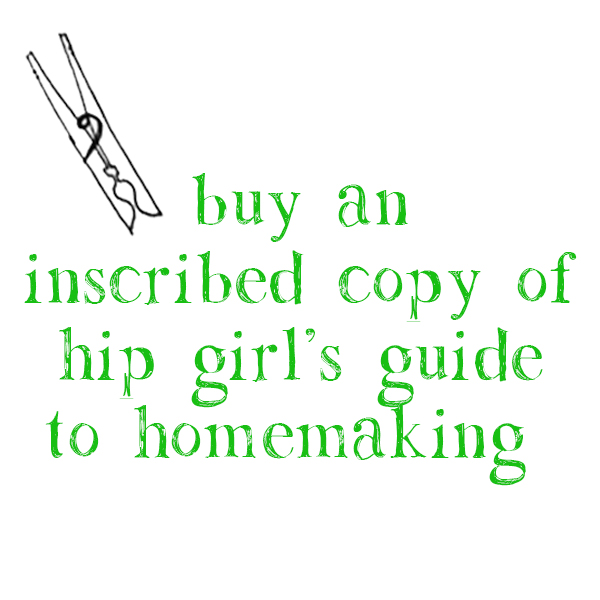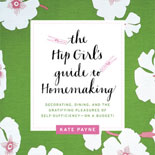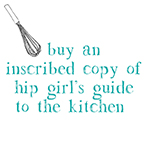Reducing a canning recipe
Small Batchin’: Tomato Vanilla JamDisclaimer: For those of who own and operate math skills in an expert fashion: Don’t read this. You might very well be insulted. For the rest of us who need a refresher on 8th grade algebra (or the art of ratios), please do read on.
Early on in my canning career, I realized small-batch (and sometimes super-small-batch) is my preferred jar style. Hence, I needed to get tight with numbers since winging it and approximating can get you killed in canning-land.
You don’t have to be able to do mental math (though it can be helpful), all you really need is a calculator. Knowing equivalents or having easy access to a chart with info like how many teaspoons are in a Tablespoon, etc. is extremely helpful, too. I’m going to demo recipe reduction with Christine Ferber’s Ripe Tomato with Vanilla recipe (from Mes Confitures).
As written:
- 4 lbs tomatoes (3.5 net, which means seeded and cored)
- 4.25 cups granulated sugar
- Juice of 1 small lemon
- 7 oz Green Apple Jelly (another recipe in her book, which I, of course, don’t have on hand)
- 2 vanilla beans
The essential factor in recipe reducing is to figure out how much of the featured produce you actually have. I realized (after 6 months of using recipe receipts, the produce scale at my co-op, and other drastic measures) that I needed to own a kitchen scale if I was truly to become Small Batch Kickass (thanks Julia). I bought one, and now I weigh the hell out of all fruit and veg I encounter.
Back to the recipe…
I had 1lb 12oz whole tomatoes at the start, which reduced to a measly 1/2-lb after the seeding and coring process. I based my reduction on the net value (1/2-lb), regardless of Ferber’s dreamland wherein you only lose a tiny portion of the volume after draining the juicy suckers.
 1-2-3 Reduce!Here’s where you pull out your calculator:
1-2-3 Reduce!Here’s where you pull out your calculator:
Divide .5 by 3.5, the answer is: 0.1428…
This is your core ratio; you (we) are making 15% of the original recipe. You now go through each ingredient listed and multiply by .15 (I rounded up to make things neat). [If you’re nervous about making such calls, then by all means just multiply each ingredient by the exact number you see on your screen, 0.1428…]
- Sugar: 4.5 x .15=0.675 cups sugar [that’s a half cup and about 1 Tbs]
- Lemon: 15% of one whole lemon juiced is about 1 tsp. [A whole lemon produces about 2 Tbs of juice, halved is 1 Tbs (in which there are about 3 tsp) so 15% of the whole (2 Tbs) is roughly a tsp)
- Jelly: 7 x .15=1.05 oz jelly [luckily I had a jar of Julia’s jelly on hand, this recipe isn’t it exactly, b/c my jar didn’t have star anise, but you get the point] I know from the equivalents chart that my half-pint jar is 8oz (or 1 cup), and if I need 1 oz, that’s and 1/8th cup, which is 2 Tbs.
- Vanilla beans: 2 x .15=0.3 of a bean. I sliced my vanilla bean in three and threw 1/3 in the pot.
If you get confused during the multiplication process, remember to check in with and assess the measurement (italicized for emphasis above) for perspective and try to reason through it (like with the jelly portion). Spices get a little crazy in the reducing process, i.e. reducing a Tbs of something. Usually ‘a pinch’ suffices (and let’s face it, you’re not going to hurt yourself or others with dried spices, so pinch away)!
Gooo small batch; now you’re cooking!
 Canning,
Canning,  Canning Basics,
Canning Basics,  Small-Batch Canning
Small-Batch Canning 





Reader Comments (11)
I reduce recipes all the time! Some of my recipes start with like, 4 pounds of [insert ridiculously expensive produce here] and I'm all, um, 4 pounds of that would eclipse my entire grocery budget for the week. So instead, voila, small batch canning, or as Tigress in a Jam/Pickle likes to call it, "reservas."
Although sometimes I get lazy and round up on the sugar, or the acids. I figure that's allowed as long as it's not lowering the acid value, I can stop trying to measure 7/16ths of a teaspoon and just go with a half.
Great tutorial Kate! Thanks! I never have quite the amount of produce I need. Usually much too little so this helps!
Nice work Carter, and thanks Meg! :)
Birlliant Post! I know it is basic, but it really does help :)
Thanks for the tutorial! The mathematical approach has never really occurred to me - I split recipes into 1/2s, 1/3s and 1/4s all the time (mostly for baking) but that's about the extent of my mental math skills. Your post brought to mind a distinct advantage of European style recipes, i.e. those that give the ingredient list in grams; with a kitchen scale, it would make downscaling recipes much easier than trying to figure out what is 4/15 of a teaspoon.
Great post -- thank you! Bookmark worthy indeed.
I just referred back to this again to reduce a recipe. Thank you! I too round up on the acid and down on non-acidic stuff like onions and garlic just to make sure I am playing it safe.
I realize I'm coming late to this post, but hurray for the joys of internet searching. :)
I'm new to canning, and I've read a lot that says you shouldn't do things like half or double a recipe. What is it that makes it safe to do so?
Hey Anissa,
Halving a recipe is always ok, provided you reduce all the ingredients proportionally correct. Doubling a recipe can get you into trouble when making things like jams, jellies and other sweet preserves because often they're written to accommodate the most fruit/juice to achieve a successful set. You can always do two separate pots if you need to double that kind of recipe.
Pickle recipes can usually be doubled provided they're not a sweet pickle that asks you to make a syrup (and reduce it).
Hope this helps!
Thanks for the information on this! I had a question. When proportionately reducing the size of a jam recipe in half for canning, what about cooking times? I am not talking about the cooking time once the jam is in the jars, and boiling in the canner, obviously, but when mixing it all in the pot on the stove (before spooning into the jars)? Should that cooking time be reduced any, since the mixture will heat thoroughly much earlier than when using twice the amount? Just wanted your thoughts.
Thanks!
--Brenda
Hey Brenda,
Yes, great question. When you reduce the volume that will be cooking down into jam it will take less time to achieve a set. You'll determine how long to keep it cooking based on the instructions for any of my jam recipes on this site. You're primarily looking for the bubbles to change size (from frothy foamy to dime sized) and for the frozen spoon test to come out just how you want it in terms of texture. If you search the site for both of those, you'll end up with a few posts to read on getting a good set in a jam. I rarely like to project how long things will take exactly for folks (even with set quantities in a recipe) since stove tops, jam pans and moisture content of the fruit are all variables that affect exact time. I like to direct folks toward identifying when their jam has set as the measure of done-ness in a recipe. Best of luck!!
best,
Kate
Kate